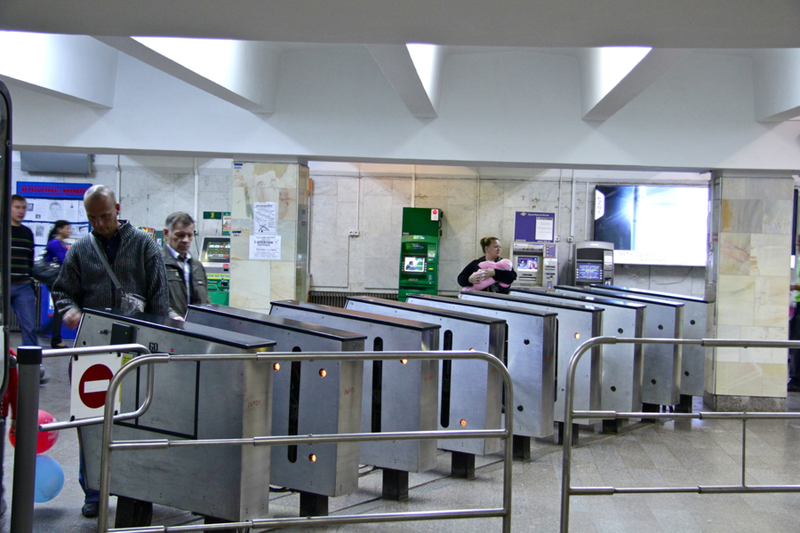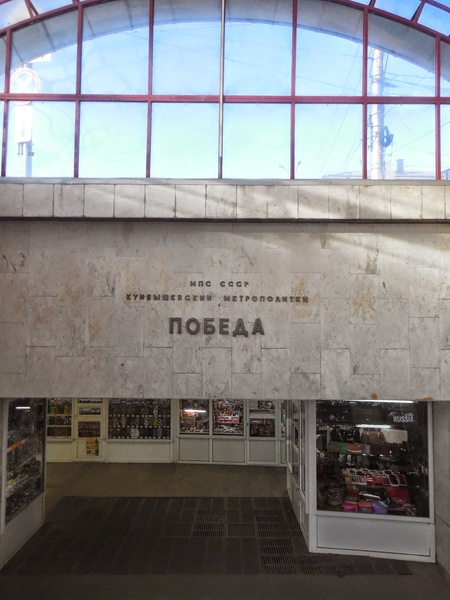Samara metro review
24.01.2015
Just before Christmas our team visited Samara and mapped the local metro system. All Samara metro data is already available in web and mobile application Metro4All.
In short, accessibility status of Samara metro is unfortunately typical for Russian metro systems – it’s not accessible.
All subway stations in Samara are low-depth, built using cut-and-cover technique. Except for Bezymyanka station, each station have only one exit to underground passages, which are not as complicated as the ones in Minsk or Nizhny Novgorod.


We noticed at once that Samara is following the new design trend and uses the metro exits numeration. Unfortunately, it was obviously not designed to be used by passengers, so we added meetcodes to our schemes, to help our app users find the exit they need.

All subway exits from underground passages are shielded with doors.

Each station has got 2 different plates with historical information.

Passengers with reduced mobility can receive transportation help by addressing subway employees. There are no phone numbers or any other contact info to ask for assistance in advance.

Not one of the stairs leading to the train platform has rails for baby-strollers. All these stairs can be equipped with wheelchair platforms – subway system is almost empty and other passengers will not be affected in any way.

All stations have a gate about 100 cm wide at their entrances, which can be used for baby-strollers to get inside. But the turnstiles at the exits are narrow – about 55 cm. This problem can be solved by installing wider turnstiles for baggage, and for now you can avoid these narrow places by asking station employees to use the entrance gate.

Doors in Samara subway and nearby underground passages are usually also narrow – about 72 cm. Bezymyanka and Pobeda stations are good example of using 96-cm-wide doors at some exits.

Half of the exits has an unfortunate single step between doors and pavement which is not doubled by ramp. This problem is solved only at new unopened Alabinskaya station.

There is a lot of kiosks in underground passages.

The stations which opened first still has a name of the first metro operator – USSR Railway Ministry.


There are few passengers in metro even during rush hour. It’s because the metro line is quite short and doesn’t service the city center and most of the largest districts. Tramways and trolleways are way more popular in Samara.
Notes on some stations:
Kirovskaya – one-arched station with escalators and 2 exits. Filled with sense of 80-90s crises. It was planned to deal with big passenger traffic to nearby factories and a transfer to suburban trains. But the underground passage to railway station wasn’t completed – there’s only one exit out of it to the city now. And it leads the flea market. The other exit from the station leads to the overground entrance hall, the only one in the city, which is closed now. They say, the reason for the closure is escalators having exhausted its resourses.

Pobeda – a beautiful station opened among the first.

Gagarinskaya – the most beautiful station of the whole metro system. Decorated in “Exporation of Space” theme.

Samara metro statistics:
- Total number of routes at 9 stations of Samara metro is 54 (27 entrance routes and 27 exit routes). The opening of new Alabinskaya station is planned for Febuary 2015.
- None of the stations of Samara metro is equipped with either elevators or wheelchair platforms.
- Escalators are installed only at 3 stations – Kirovskaya, Moskovskaya and Gagarinskaya.
- There are no routes accessible for wheelchair users. The average number of steps while entering/leaving the station is 58 steps.
- There are 10 routes (18.5% of the total number) accessible for parents with baby-strollers at 3 stations – Kirovskaya, Moskovskaya and Gagarinskaya.
No comments
 English
English